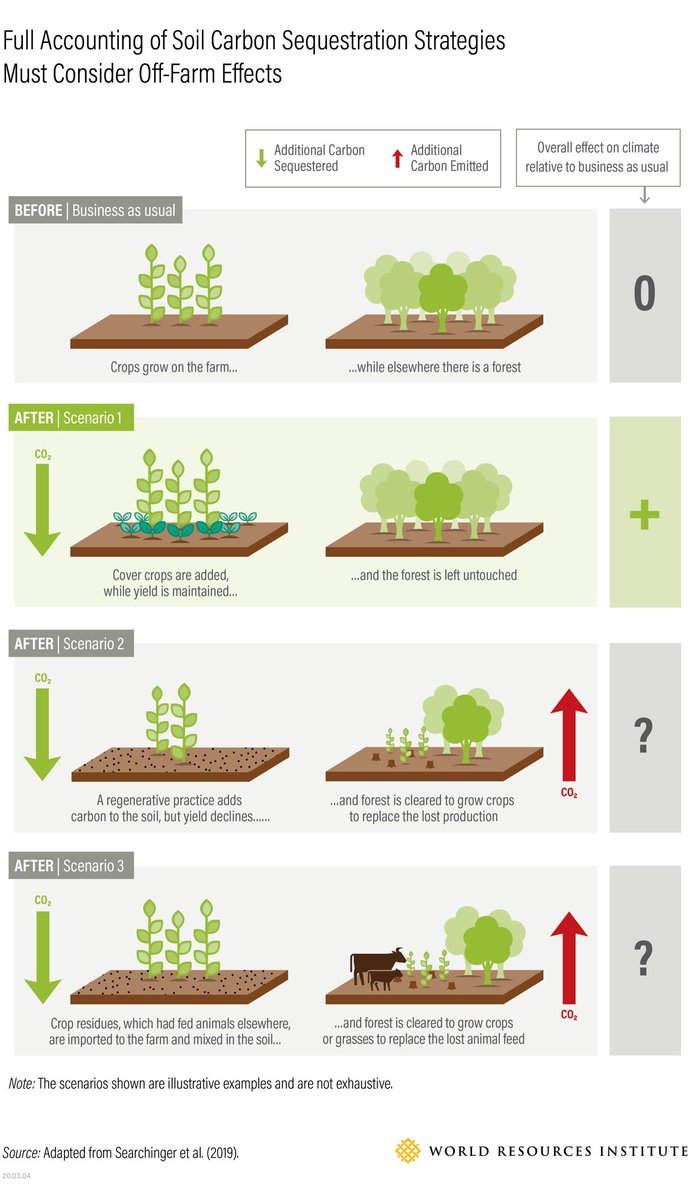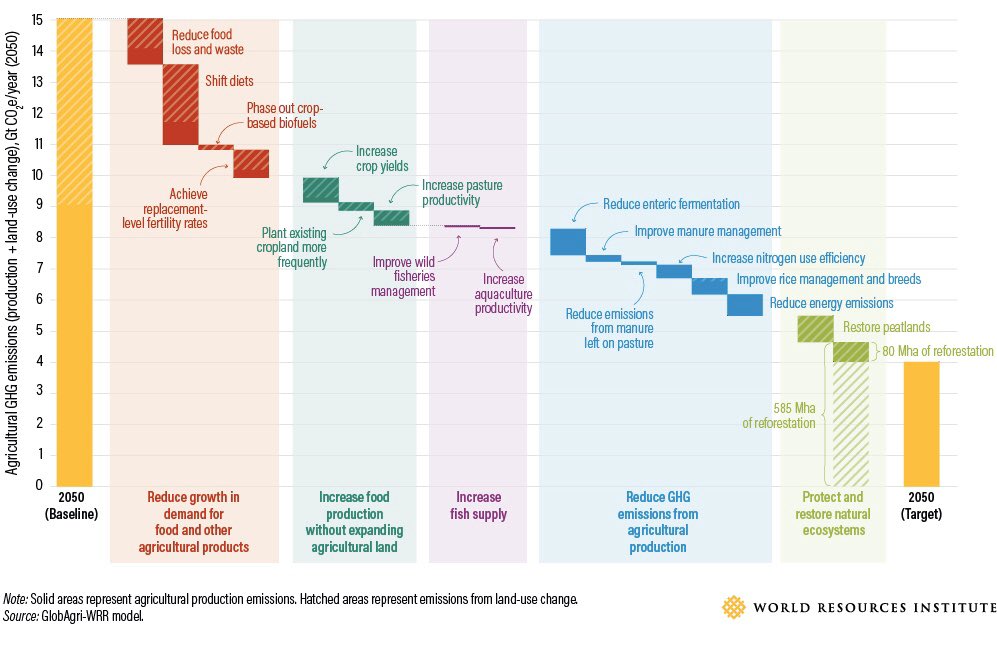Can increasing carbon sequestration in soils—through practices broadly referred to as regenerative agriculture—be a leading climate solution? Our read of the evidence suggests that soil C sequestration has limited potential to mitigate climate change. 1/ https://www.wri.org/blog/2020/05/regenerative-agriculture-climate-change">https://www.wri.org/blog/2020...
Although regenerative agriculture has no universal definition, it is often used to describe practices aimed at promoting soil health & restoring soil organic C.
Practices include no-till, cover crops, diverse crop rotations, improved grazing, and reduced chemical inputs. 2/
Practices include no-till, cover crops, diverse crop rotations, improved grazing, and reduced chemical inputs. 2/
There is broad agreement that regenerative agriculture practices are good for soil health and have other environmental benefits, including water retention and reduced water pollution. 3/
The thinking behind regenerative practices as a climate mitigation strategy is to remove carbon dioxide out of the air by storing it as organic carbon in soils. But there are some practical limitations to achieving soil C sequestration at scale. 4/
There’s limited scientific understanding of what keeps soil carbon sequestered, resulting in uncertainty around practical potential. Effects can be complex, site-specific and hard to predict. And they are reversible (e.g., plowing up soils after years of no-till). 5/
Studies that demonstrate soil C sequestration on a study plot often fail to account for off-farm effects. But if the C sources (e.g., soil amendments) would have otherwise been stored/used elsewhere, it simply moves C from one place to another, achieving no GHG reduction. 6/
Practices can also face barriers to wider adoption. For example, a recent study estimated using cover crops across 85% of US cropland could sequester ~100Mt CO2/year. But cover crops still only occupy less than 4% of US cropland, despite their many benefits. 7/
Given these and other scientific and practical challenges, one cannot simply multiply observed soil C benefits on one study plot across millions of hectares of land to obtain estimates of real-world climate change mitigation potential. 8/
That said, soils naturally store massive amounts of C, and the scientific understanding behind this process is still emerging. If future research finds new ways to sequester C or dramatically changes our understanding of existing approaches, our conclusions would change. 9/
Fortunately, there are many other ways to reduce food/ag/land-related GHG emissions. Our Creating a Sustainable Food Future report lays out a five-course menu of solutions to feed 10 billion people by 2050 while driving emissions toward net-zero. 10/ https://www.wri.org/blog/2018/12/how-sustainably-feed-10-billion-people-2050-21-charts">https://www.wri.org/blog/2018...

 Read on Twitter
Read on Twitter



